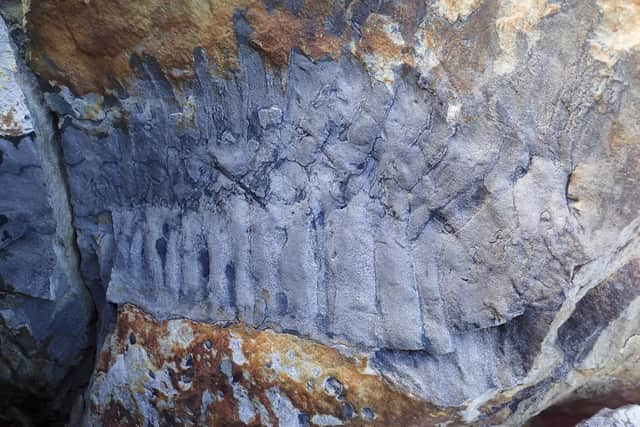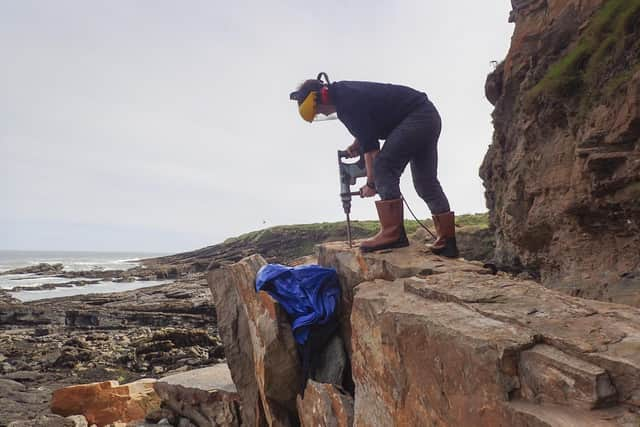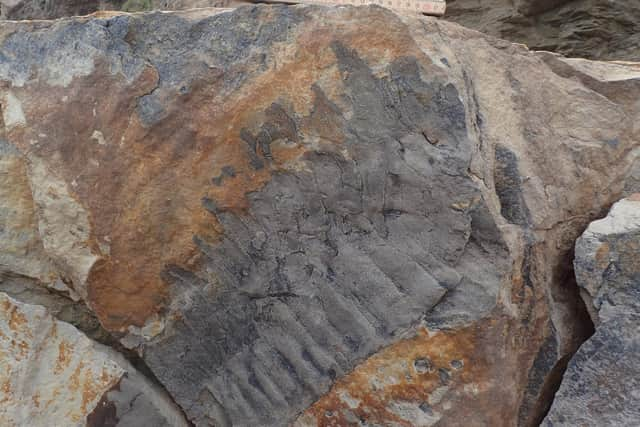Millipedes 'as big as cars' once roamed Northern England, 326 million-year-old fossil reveals
and live on Freeview channel 276
The largest ever fossil of a giant millipede was found by a "fluke" on a Northumberland beach at Howick after a section of cliff fell onto the shore.
Experts said in order to get so big, the creature, known as Arthropleura, must have found a nutrient-rich plant diet and may even have been predators, feasting on other invertebrates or small amphibians.
Advertisement
Hide AdAdvertisement
Hide AdThey believe the specimen is a section of the creature's exoskeleton that it shed near a river bed, which was then preserved by the sand.


Only two other fossils of this kind have been uncovered before, but this fossil was the largest and the oldest yet.
Dr Neil Davies, from Cambridge University’s Department of Earth Sciences and lead author of a paper on the fossil, said: "It was a complete fluke of a discovery.
"The way the boulder had fallen, it had cracked open and perfectly exposed the fossil, which one of our former PhD students happened to spot when walking by."
Advertisement
Hide AdAdvertisement
Hide AdThe segment is about 75 centimetres long, leading scientists to believe its entire body could have measured around 2.7m long and weighed 50kg.
The remains of the creature date from the Carboniferous Period, more than 100 million years before the Age of Dinosaurs.
At the time, Great Britain lay near the equator and enjoyed warm temperatures.
A former PhD student who was walking along the coast in January 2018 spotted it in a large block of sandstone that had fallen from the cliff.


Advertisement
Hide AdAdvertisement
Hide Ad"While we can’t know for sure what they ate, there were plenty of nutritious nuts and seeds available in the leaf litter at the time, and they may even have been predators that fed off other invertebrates and even small vertebrates such as amphibians," Dr Davies added.
The creatures crawled around the equatorial region for around 45 million years, before going extinct, possibly due to global warming that made the climate too dry for them, or due to the rise of reptiles, who out-competed them for food.
The fossil was removed with permission of Natural England and the landowners, the Howick Estate, and was taken to Cambridge for analysis.
It was so big it required four people to carry it.


The fossil will go on public display at Cambridge’s Sedgwick Museum in the New Year.
Advertisement
Hide AdAdvertisement
Hide AdThe results are reported in the Journal of the Geological Society.
It is thanks to our loyal readers that we can continue to provide the trusted news, analysis and insight that matters to you.
For unlimited access to our unrivalled local reporting, you can take out a subscription HERE and help support the work of our dedicated team of reporters.
